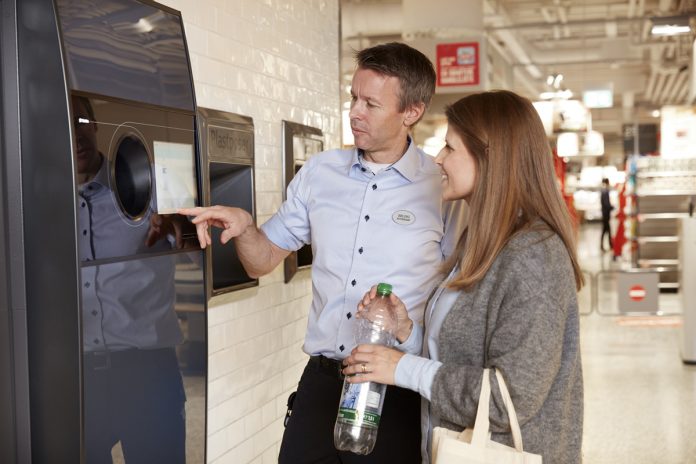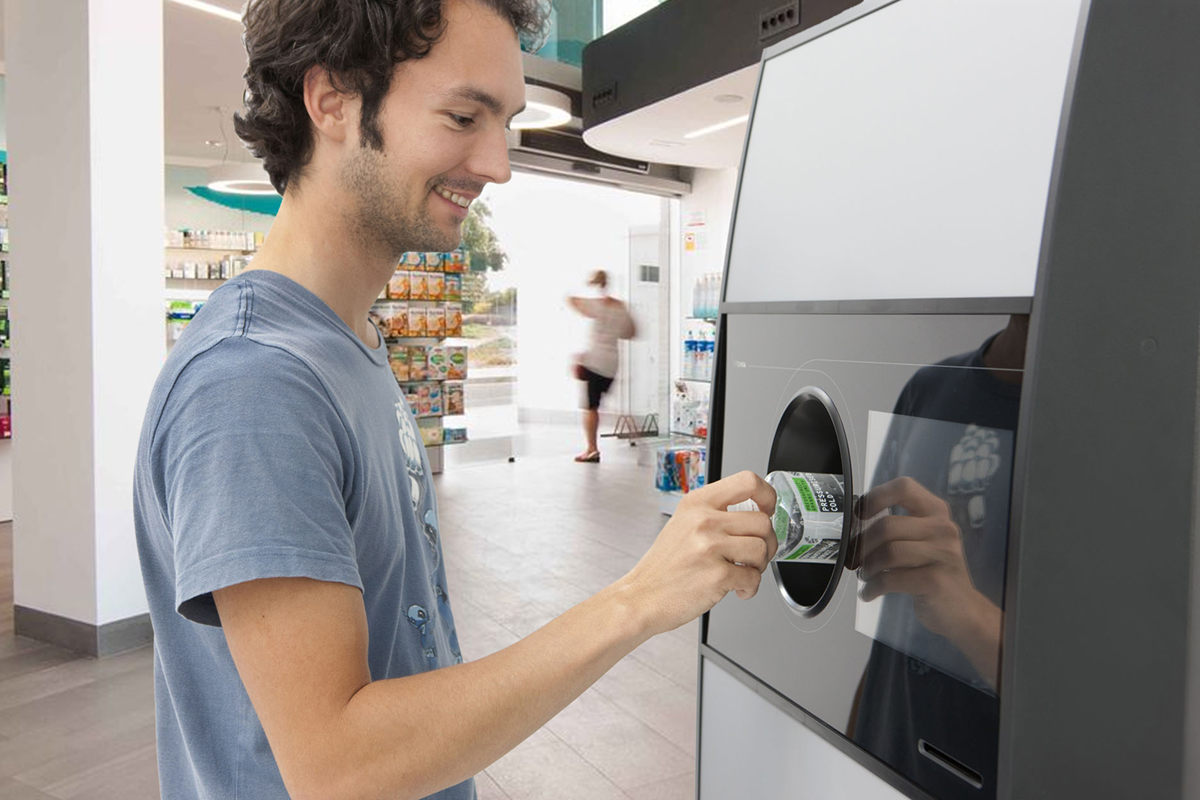Truls Haug, Country Manager, UK Collection Solutions at TOMRA details the ‘return-to-retail’ model for deposit return systems
The world is on a plastics spree. The global consumption of plastic drinking bottles hit 480 billion in 2016 and is set to increase by 20% within the next three years. Rising litter and ocean plastic are putting pressure on governments, businesses and consumers to address the environmental impact of beverage container waste.
Deposit return systems (DRS) offer an effective solution for collecting and recycling containers, reducing pollution by incentivising consumers to return their empties. Forty markets worldwide have adopted DRS on single-use containers, with numerous ways to implement them. A key question for legislators is where to place return points: at multiple smaller locations, or should there be fewer, dedicated depots?
One approach is the ‘return-to-retail’ model, where shops selling beverages become legally responsible for accepting used containers for recycling. This achieves up to 99% return rates in the best-performing markets. Offering convenient locations for consumers and faster roll-out for legislators, this model also benefits retailers through increased footfall, financial incentives and an improved corporate image.
TOMRA has first-hand insight into different collection models and the results they achieve. Founded in 1972, TOMRA collects 35 billion containers for recycling annually through 82,000 reverse vending installations worldwide. TOMRA has vast experience in markets that legislate retailer participation, in terms of those with central depots and hybrid models offering both. Here is how the return-to-retail model works and what it means for government, business and consumers.
What is the return-to-retail model?
Return-to-retail legislation requires stores selling beverage containers to collect them for recycling after use. Shops gain an opportunity to help recycle a retail product that can pollute streets, parks and oceans. Legislation might apply only to larger supermarkets, like Lithuania where urban stores over 300 sqm must participate, while smaller stores can opt-in.
For efficiency purposes, shops often decide to provide reverse vending machines (RVMs). Located indoors or outdoors, RVMs make container returns both fast and convenient. RVMs count and analyse containers, reject ineligible items and pay refunds. Faster than manual handling, RVMs ensure recycling takes minimum personnel time.
Return-to-retail results
“Pure” return-to-retail models exist in nine European, one U.S. and three Canadian DRSs. Ten additional markets have hybrid models featuring some retailer participation.
The world’s eight best-performing DRSs employ return-to-retail, achieving an average return rate of 93%. Germany, which introduced a return-to-retail DRS in 2003, sees 98% of plastic bottles collected and 99% of cans. Norway, where TOMRA pioneered the first RVMs in 1972, returns 92% of all beverage containers for recycling. Regions without retail involvement average 77% returns, with some markets as low as 48%.
For government
With convenient locations and the strong track record of return-to-retail, legislators are, therefore, more likely to achieve positive community response and higher return rates. Lithuania saw returns rise from 34% to 92% within just two years of launching its return-to-retail DRS – something that is certainly an environmental, economic and policy success.
With supermarkets close to residential areas, return-to-retail removes the need to build or outfit new depots, so DRS can deploy faster and more cost-effectively. Supermarkets typically have networks across whole markets, including remote communities, ensuring recycling points for everyone. Supermarkets can accommodate truck access, for dedicated pick-up or backhauling to a central warehouse (for organised collection, lower costs and fewer trips).
Finally, return-to-retail collection often avoids extra costs. Non-retail redemption operators tend to incur higher handling fees, require funding for site maintenance and charge commercial rates for services like bin changing and refunds.
For retailers
- Increased footfall. Retail returns bring more shop visits, especially if recycling refunds serve as in-store credit. 93% of Swedish RVM users shopped when they recycled; 44% did their full weekly shopping. In four countries, shoppers returning containers spent more money than those not recycling.
- Financial reimbursement. Many markets pay retailers a handling fee for each container received, to recuperate any investment and operational costs. This revenue continues once the investment is covered.
- Brand image. Retailers build their corporate image, showing the store’s CSR commitments and supporting sustainability initiatives.
- Richer data. Today’s RVMs offer retailers digital products to enhance customer service, including user analytics, marketing channels and consumer engagement opportunities.
- Operational support. TOMRA offers advice on the most suitable machines (with solutions for the largest hypermarket to the smallest corner store, so RVMs can have a very small footprint), plus service and support after installation.
Several options exist to finance RVMs. In some regions, retailers purchase RVMs, while other markets lease or simply host. In Lithuania, TOMRA provided RVMs to stores for free, as the DRS system operator pays TOMRA a ‘throughput’ fee.
For consumers
Return rates improve with convenient access: while depots are fewer and further away, people already visit supermarkets regularly. Recycling becomes habit and consumers avoid ‘going out of their way’ to recycle. Eliminating travel time reduces car congestion, fuel consumption and air pollution.
With many food shops available, consumers have multiple return points, cutting wait times. In RVM user surveys, over 75% of respondents said avoiding queues was extremely important.
With return points in stores, retailers keep the area clean, redemption opening times are easy for consumers to remember and staff are nearby. Consumers enjoy their recycling experience, benefiting the retailer and the environment.
The future of return-to-retail recycling
As more markets introduce deposit return legislation, the clearer it becomes that model design – including the extent of retailer participation – greatly influences return rates.
By adopting the return-to-retail approach, governments, businesses and consumers can help increase the effectiveness of DRSs and reduce container waste.
Please note: this is a commercial profile
Truls Haug,
Country Manager,
UK Collection Solutions
TOMRA
Tel: +47 667 99207












